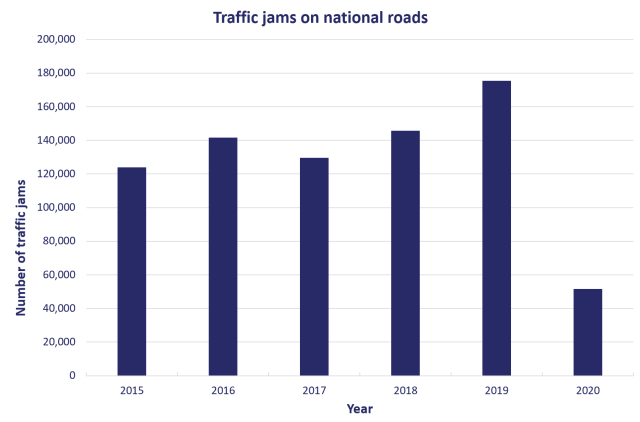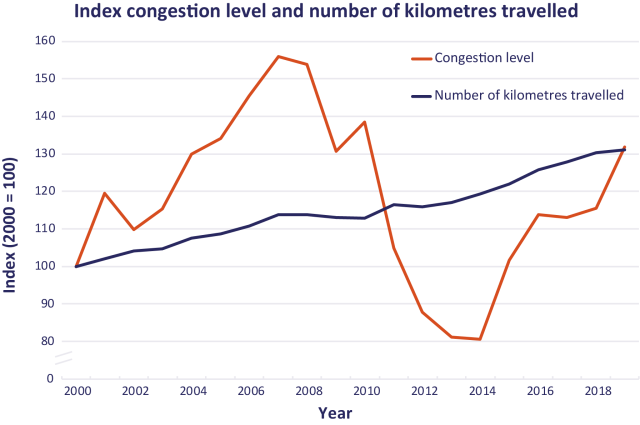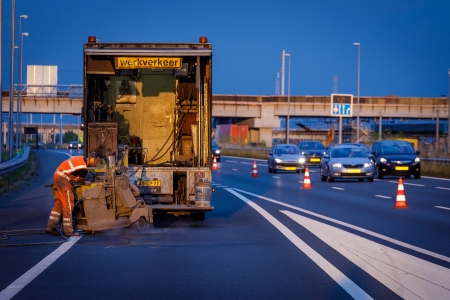In a recent KiM survey, 15% of the respondents indicated driving in a traffic jam at least once a week for an average duration of 43 minutes. Over half of the respondents usually drove in a traffic jam during the afternoon peak hour and almost a quarter of them in the morning peak hour [3].
Objective data about the number of traffic jams are only available for national roads with signalling (Motorway Traffic Management - MTM). Traffic jams on the secondary road network are not (centrally) reported or registered. In 2015-2019, the number of traffic jams on national roads showed an upward trend, with a strong increase in 2019, see Figure 1. The lower figures in 2020 are due to the COVID-19 travel restrictions.

Figure 1. Number of traffic jams on national roads, by year (source: WVL, RWS [4] ). The low numbers for 2020 are due to the COVID-19 pandemic.
Short traffic jams are more frequent than prolonged ones. To assess the delay due to traffic jams, the congestion level is a better indicator than the number of traffic jams. The congestion level is the product of the average queue length and the average queue delay and is expressed in millions of kilometre minutes per annum. In 2019, the congestion level was 13.3 million kilometre minutes, while due to COVID-19 it decreased by 68% to 4.2 million kilometre minutes in 2020. Figure 2 shows the indexed congestion level of the national road network and the total vehicle kilometres travelled in 2000-2019. In 2008-2014, the congestion level decreased while the number of vehicle kilometres continued to grow. The 2008-2014 decrease may be due to steps taken to increase road capacity as part of the Beter Benutten (improved utilisation) programme (with measures such as peak hour lanes, storage lanes and adding narrow lanes by re-designing the existing cross-section). The effect of the programme was clearly temporary, since congestion levels after 2014 increased considerably.

Figure 2. Development of indices of congestion level and number of kilometres travelled, compared to 2000 (source [2]).
